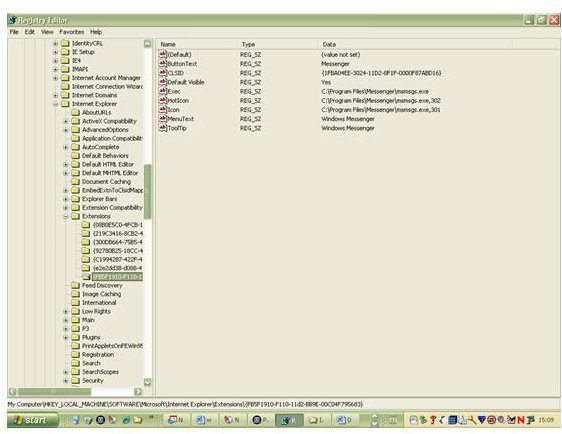How to Edit the Windows Registry - Cool Windows XP Registry Changes
Some Useful Windows Registry Edits
Adding or editing windows registry keys is not for the novice user. However if you have a broad understanding of hierarchical menu structures, configuration databases, or for that matter a ‘snazzy’ windows registry editing tool then ‘tweaking’ the windows registry is hugely advantageous. It can be a highly effective way to streamline connectivity, hardware, software, user preferences and privileges.
Below are some excellent examples of windows registry editing.
Removing Windows Messenger from Internet Explorer
A simple registry edit which enables the windows messenger toolbar and icon to be removed from Internet explorer.
- Launch regedit
- Navigate to HKEY_LOCAL_MACHINE/Software/Microsoft/Internet Explorer/Extensions.
- Right click on the key {FB5F1910-F110-11d2-BB9E-00C04F795683} and choose rename. Add a ‘-‘(minus) to the start of the key.
On restarting Internet Explorer the Windows Messenger integration with IE will be removed.
Disable task manager
An excellent administration lock down, preventing users from accessing the task manager in order to view processes, applications and make precedence changes to individual tasks.
- Launch regedit
- Navigate to HKEY_LOCAL_MACHINE/Software/Microsoft/Windows/Current Version/policies/system.
- Under the system key create a new DWORD value called “DisableTaskMgr”. Set the value to ‘1’. This will disable the task manager
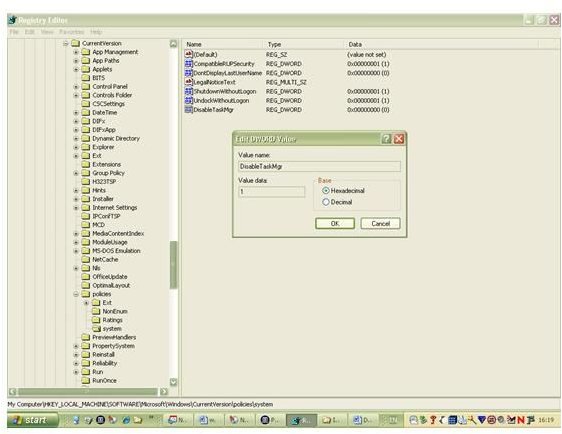
To revert back to the default simply set the value to ‘0’ = no effect. For this change to take effect the user will need to log off, although it does not require a full reboot.
Preventing the system from automatically rebooting after a windows update
As is the case for the vast majority of users, windows is configured to perform automatic updates. When these updates are performed, if any individual components require a reboot of windows then the system automatically reboots. The following registry edit enables the user to control this rebooting.
- Launch regedit
- Navigate to HKEY_LOCAL_MACHINE/Software/Policies/Microsoft/Windows/Windows Update/AU.
- Under the AU key create a new DWORD value called “NoAutoRebootWithLoggedOnUsers”.
- We are wanting to toggle ‘on’ or ‘off’ the reboot process. As such enter ‘1’ to disable the automatic reboot
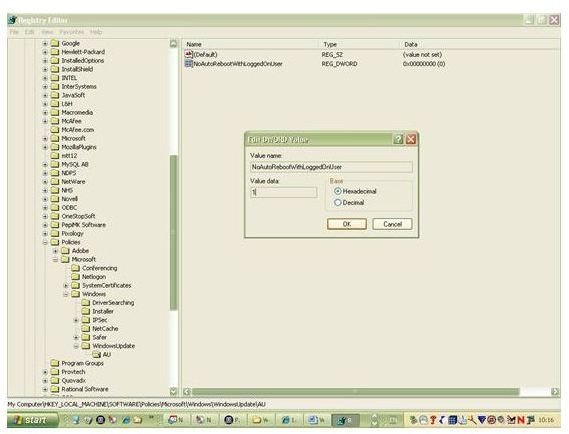
To revert back to the default simply set the value to ‘0’ = no effect (continue as before, i.e. reboot). Somewhat ironically, you will need to reboot the system for this change to take effect!
Adding a Right click menu option to Favorites
Adding right click menu functionality is another excellent tweak within the windows registry. One example is adding a right click menu option to your favorites, where the end user can open the favorite in a new window.
- Launch regedit
- Navigate to HKEY_CLASSES_ROOT/InternetShortcut/Shell
- Under the shell key create a new subkey called “Open in a new window”. Under this new key create a further subkey called “command”.
- In the right hand pane open the ‘default’ key and enter the value “rundll32.exe shdocvw.dll, OpenURL %1”
- Select OK for the change to take effect
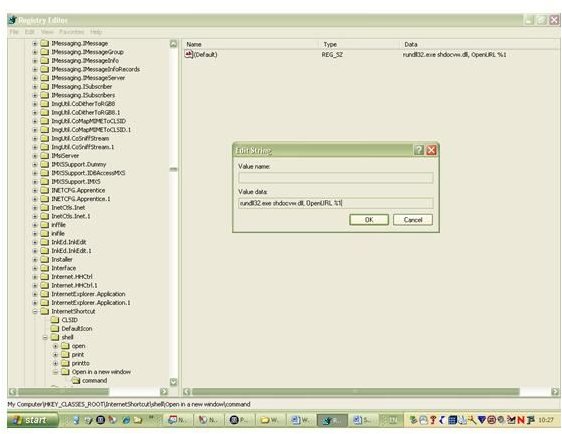
Right click on one of your favorites. There will be a menu option to “Open in a new window”.
Configure Windows to close services correctly by increasing the shutdown process time
- Launch regedit
- HKEY_LOCAL_MACHINE/SYSTEM/CurrentControlSet/Control.
- In the right hand pane, create a new String value, or modify the existing value ‘WaitToKillServiceTimeout’
- Enter the Value Data = ‘20000’
- Click Ok – Exit - Reboot.
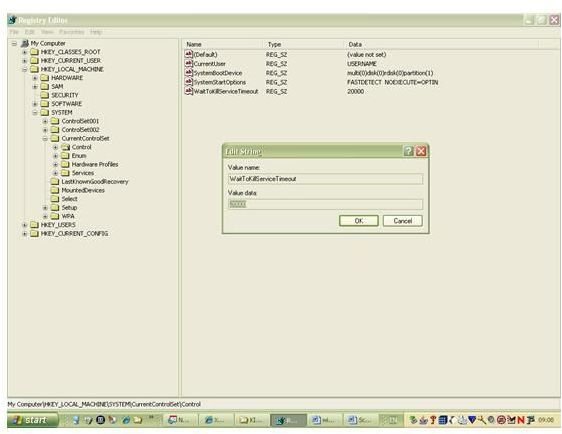
Removing ‘Properties’ option in My Computer
- Launch regedit
- HKEY_CURRENT_USER/Software/Microsoft/Windows/CurrentVersion/Policies/Explorer
- In the right hand pane, create a new DWORD value, or modify the existing value ‘NoPropertiesMyComputer’.
- Enter the Value Data ‘1’ = No Properties. To revert back set ‘0’ = Show Properties
- Click Ok – Exit - Reboot

Enable Start Menu Scrolling
- Launch regedit
- HKEY_CURRENT_USER/Software/Microsoft/Windows/CurrentVersion/Explorer/Advanced
- In the right hand pane, create a new String value, or modify the existing value ‘StartMenuScrollPrograms’
- Enter the Value Data “Yes” or “No”
- Click Ok – Exit - Reboot.
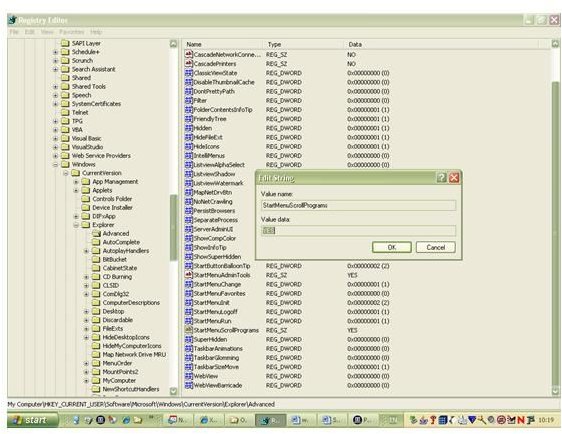
Remove the ‘Links’ Folder from Favorites
- Launch regedit
- HKEY_CURRENT_USER/Software/Microsoft/Internet Explorer/Toolbar
- Set the ‘LinksFolderName’ value to a blank string, i.e. delete the value data
- Click Ok – Exit.
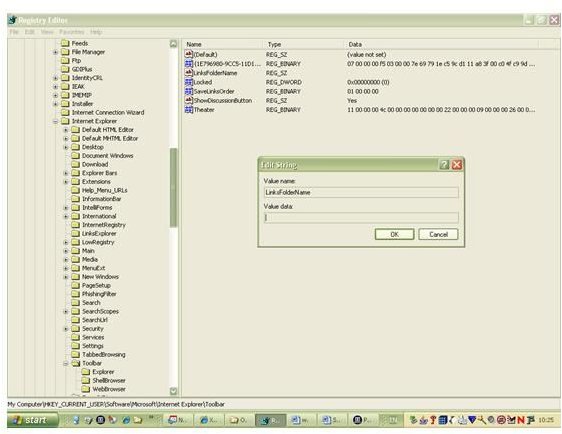
Launch Internet Explorer and delete the ‘Links’ folder from the Favorites menu. Any subsequent launch of Internet Explorer will not create the ‘Links’ folder.
Disable Error Reporting
- Launch regedit
- HKEY_LOCAL_MACHINE/SOFTWARE/Microsoft/PCHealth/ErrorReporting
- In the right hand pane, create a new DWORD value, or modify the existing value ‘DoReport’
- Enter the Value Data ‘0’ = Disables Reporting or ‘1’ = Send Report
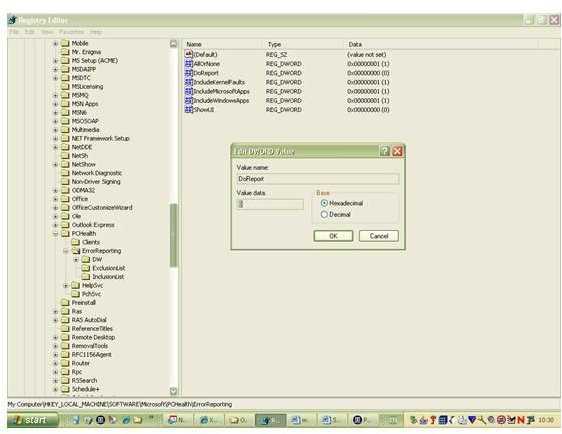
This post is part of the series: Windows Registry User Guide
An Introduction to the Windows Registry, looking at the structure of the registry, how it can be tweaked and changed to optimize PC performance and what is the best software for cleaning the Windows Registry.
- An Introduction To The Windows Registry
- The Windows Registry Editor Hierarchical Structure - Hives, Keys & Values
- What is the Windows Registry? Tweaking the Registry Editor
- Optimizing the Windows Registry - Good Practice & Top Registry Edits
- Optimizing the Windows Registry - The Best Windows PC Cleaning Software for the Registry Editor
